Sayote (Chayote) Steamed in Butter
As an Amazon Associate and member of other affiliate programs, I earn from qualifying purchases.
Soft vegetable cubes of Sayote (Chayote) Steamed in Butter, almost like squash, translucent and light green, thick-textured yet silky to the touch, was steamed then slathered in butter which melted right away on the whole dish. The steamy vapors from the vegetable, smelled of a garlic-buttery saltiness and was perfect with the aroma of boiled jasmine white rice which was waiting next to the platter.
Sayote steamed in butter has always been one of my favorite vegetables. My mom used to serve it to us often when I was a child. I remember how good its soft, buttered cubes tasted paired with a garlicky-vinegary adobo dish, Filipino style. Oh, this was always one of the best home cooked meals hands down.
Sayote (say ‘sa-yo-teh’ ) is the Filipino term for the chayote, the vegetable that’s botanically a fruit. It belongs to the same family as those of the squash. It grows in warmer climates, typically South America and in Mexico. It also grows abundantly in the Philippines.
Sayote was defined as a “mirliton pear, a light green, oval fruit that becomes soft and bland when cooked” by the late Professor Doreen G. Fernandez, pioneer food writer in her book “Sarap: Essays on Philippine Food”.
The Spanish term is “chayote” and it is shaped like a pear, has a tough, yet smooth light green outer skin. When peeled, the inside reveals an opaque lighter green thick flesh, with a white membrane that has tiny seeds embedded within. I just peel it, slice it with a large, sharp knife and remove the seeds. Once sliced and cubed, it is easy and quick to cook. When the sayote is cooked like a vegetable , it has a light, bland flavor, similar to the squash or gourd. When boiled, steamed or sauteed in onions and garlic, the flavors add an interesting dimension to the dish.
Sayote (Chayote) Steamed in Butter
Equipment
- large skillet or wok
Ingredients
- 1 whole large sayote (chayote) peeled, seeded, cubed, about 1 1/4 cup
- 1 whole onion sliced thin
- 2 cloves garlic minced
- 1/2 teaspoon black pepper corns
- 1 teaspoon black pepper powder
- 1 teaspoon salt
- 1 Tablespoon butter or margarine
- 2 stalks scallions chopped,for garnish
- 1/3 cup water
- for serving: steamed rice
Instructions
- In a small saucepan, put together the sayote ( chayote) cubes, water, onion, garlic, black pepper powder, pepper corns, salt. Cover and cook over medium heat for 10 minutes or till sayote cubes are soft.
- When the sayote (chayote) is fork-tender, while still hot, add the butter and mix well. The butter should melt within 1 minute in the hot bed of vegetables and spread all over.
- Serve warm with boiled jasmine white rice. Garnish with chopped scallions.
- Cook's Comments: If serving to little children, you can omit the black peppercorns and minimize the black pepper to just a sprinkle. I recall my own kids did not care for "those round black things" when they were little.
- Ingredient availability: The chayote is available in most Asian groceries or major supermarkets, in the ethnic vegetable aisle, almost year round.
- Hello, Friends! All the images and content on this blog are COPYRIGHT PROTECTED and owned by my media company Besa-Quirino LLC. This means BY LAW you are NOT allowed to scrape, lift, frame, plagiarize or use my photos and recipe content I wrote, on your website without my permission. If you want to republish this recipe or content on another website or news article, please ASK my permission, re-write it in your own words and simply link back to this blog to give proper attribution. It’s the legal thing to do. Thank you. Email me at [email protected]
Nutrition
Notes on Nutrition: The nutrition information provided is an estimate and will vary based on cooking methods and specific brands of ingredients used.
Did you like this recipe?I have more Filipino Instant Pot recipes in my newest cookbook Instant Filipino Recipes: My Mother’s Traditional Philippine Cooking in A Multicooker Pot by Elizabeth Ann Besa-Quirino. I also have more classic recipes inspired by my mother’s cooking in my popular cookbook: My Mother’s Philippine Recipes. If you’re learning how to cook Filipino food or a fan of Philippine cuisine, buy my cookbooks and books on Amazon.com sold worldwide in paperback and Kindle format.
Copyright Notice: Hello, Friends! Please DO NOT LIFT OR PLAGIARIZE my original recipe, stories, photos or videos. All the images and content on this blog are COPYRIGHT PROTECTED and owned by my media company Besa-Quirino LLC. This means BY LAW you are NOT allowed to copy, scrape, lift, frame, plagiarize or use my photos, essays, stories and recipe content on your websites, books, films, television shows, videos, without my permission. If you wish to republish this recipe or content on media outlets mentioned above, please ASK MY PERMISSION, or re-write it in your own words and link back to my blog AsianInAmericaMag.com to give proper attribution. It is the legal thing to do. Thank you. Email me at [email protected]

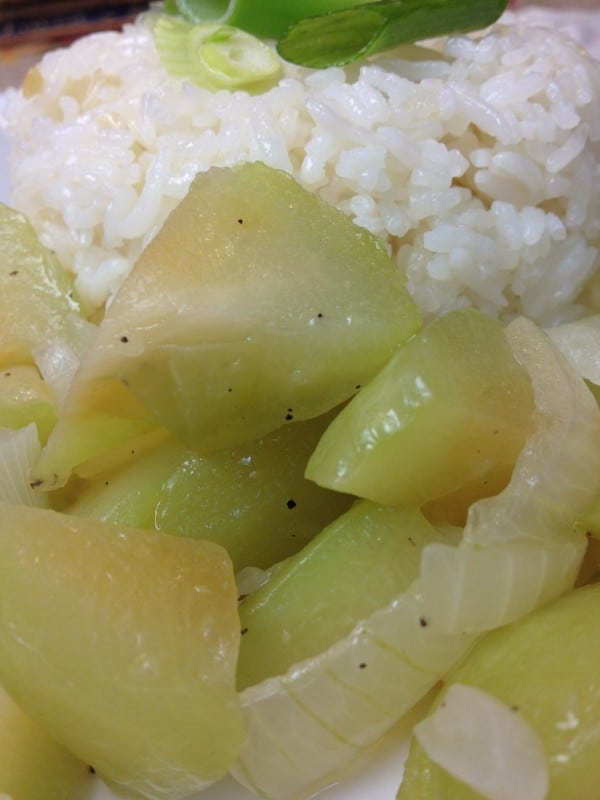
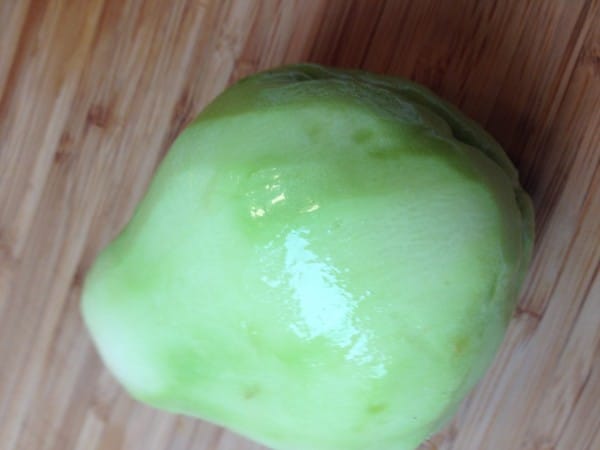
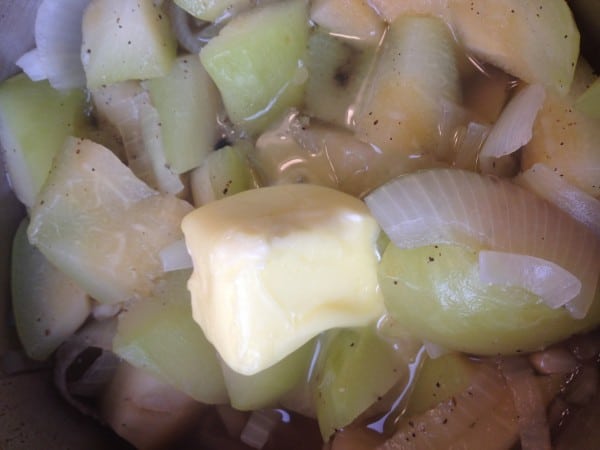
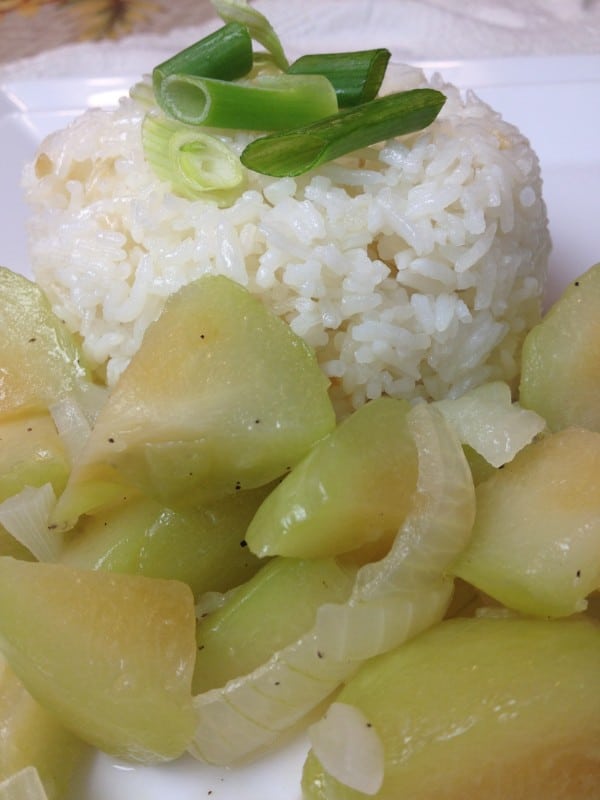
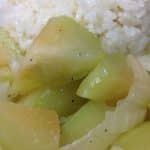

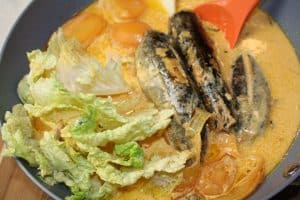

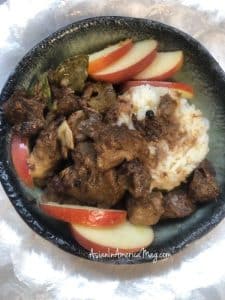


I’ve never tried Sayote. This recipe looks scrumptious though!
Thanks, Russell. Sayote or chayote in Asian groceries are available almost year round. They taste somewhat like a bland squash, and when uncooked have the crisp texture of a gourd. Try it, it’s rich in antioxidants and vitamins according to the folks on Wikipedia. Glad you came by!
Now you got me curious about this fruit-like vegetable. You said we can get it in an Asian market, so I’m going to check it out tomorrow when I go. I love veggies and simple cooking like this only brings the great flavor of the ingredient. Wish me luck at the Asian market!
Hi Nami! The “chayote” is found in Asian supermarkets and major groceries. At Asian supermarkets, it’s in the vegetable section, near the gourds and squash ~ that’s where I find my supply. In larger, USA major grocery chains, I find it in the vegetable section, by the ethnic veggies, near the jicamas, plantains, mangoes, aloe and others of the like. Better yet, ask the customer service of your grocery- the chayote is used in a lot of Latin American recipes,too. Hope this helps. Thanks for stopping by.
OK, you are going to get me to try it now. Your recipe looks so simple and the photos make me want to lick the computer screen:)
Hi, Laura! The chayote or “sayote” (say ‘sah-yoh-te’) is amazing! Hope you get to try it in different ways. And as a bonus, it is cheap, so you can buy plenty. Do a simple stir fry and you’ll love it! Thanks for the blog visit. Looking forward to our #chayote chat soon!
so in cooking onion, garlic first,have to use a small amount of our usual kitchen cooking oil? butter is only after the cayote is cooked?
Thanks, Bar. Enjoy!
oh never mind. I got it now:) thank you
This is one of my favorites from the Philippines. when I was there, I often used it as a substitute for potatoes. Now, that I am back in the US and on a low carb diet I am even more interested in this amazing little fruit and how many ways it can be used in place of some of it’s other high sugar, high carb counterparts such as mashed potatoes and apples in apple sauce and pie etc. I am in love with this hardworking little guy. And am always searching for new ways to prepare it. Thank you for the recipe. I’m sure my Filipino husband will really enjoy it, too.
Thanks, Lauren. I hope this recipe helps you. Keep me posted on how your dish turns out. 🙂
Thank you for the recipe, will try it tonight! Glad I found this website, will try more recipes and sign up for subscription! Thanks!
Thanks, Kim. I’m glad to help. Enjoy the steamed sayote 🙂
Oh my gawd! Couldn’t have imagined this any better! So dang good! This is how I will be making my chayote from now on. Thank you so much!
Thanks, Jasmine. Enjoy !
I have also found that chayote helps kill an acid stomach.
Thanks, Mary. Glad to hear this tip.